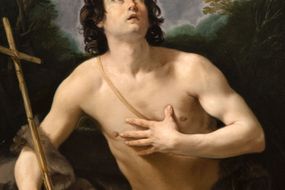From 16 March to 9 May 2023
With this exhibition, the Royal Palace of Naples and the Museo e Real Bosco di Capodimonte are launching a collaboration centered on the dialogue between the art collections of the two museums, both fruit of Bourbon collecting between the eighteenth and nineteenth centuries. The exhibition has as its fulcrum the Flagellation by Caravaggio, which - although not belonging to the royal collections - is a work that clearly marked the course of seventeenth-century art, with particular reference to Neapolitan painting. The 'dialogues around Caravaggio' revolve around two themes: on the one hand, all the Caravaggesque paintings purchased in 1802 in Rome by Domenico Venuti for Ferdinand IV of Bourbon are brought together for the first time; on the other hand, a comparison is proposed on the representation of the iconographic theme of the Flagellation and the Ecce homo, through the interpretation given by various artists between the 16th and 17th centuries.
The revolutionary wave triggered off in France in 1789 also had repercussions on the Neapolitan artistic heritage. After King Ferdinand IV of Bourbon fled to Palermo, the Neapolitan Republic was proclaimed in 1799, which allowed the French to appropriate a series of paintings destined for the Louvre. Even before returning to Naples in 1801, the king was concerned with recovering the stolen works. The task was entrusted to Domenico Venuti, director general of the excavations of the Kingdom. Satisfied with his work, in 1802 Ferdinand IV commissioned him to make new purchases in Rome. On this occasion Venuti managed to obtain paintings from prestigious collections such as those of the Colonna, Borghese and Altieri families.
The list of 118 paintings purchased in Rome in 1802 attests to the interest in the Caravaggio school: the seven paintings gathered in this exhibition were included. The attributions proposed by Venuti are not always reliable, but they correctly attribute the paintings in question to the "pupils" of the Lombard painter or to the master himself, with the exception of the San Giovanni Evangelista "believed by Domenichino", only recently returned to Antiveduto Grammatica. In the Royal Palace there had been a "Gallery" since the seventeenth century, which in the nineteenth century became the seat of the most important pieces of the collection: in 1808 Honthorst's Orpheus and Spadarino's Jesus among the doctors were placed there (at the time considered originals by Caravaggio ), in addition to the San Giovanni Evangelista.

piazza del Plebiscito, 1, Naples, Italy
Opening hours
| opens - closes | last entry | |
| monday | 09:00 - 20:00 | 19:00 |
| tuesday | 09:00 - 20:00 | 19:00 |
| wednesday | Closed now | |
| thursday | 09:00 - 20:00 | 19:00 |
| friday | 09:00 - 20:00 | 19:00 |
| saturday | 09:00 - 20:00 | |
| sunday | 09:00 - 20:00 |

From 11 October to 18 January 2026
The "divine" Guido Reni in the Savoy collections and on the altars of Piedmont

Royal Museums of Turin, Turin